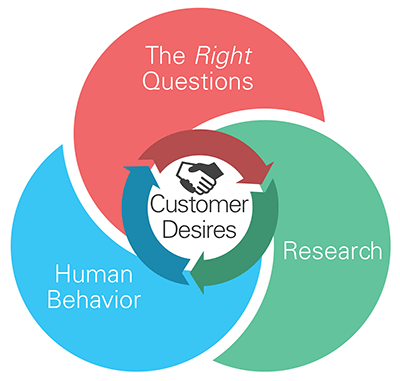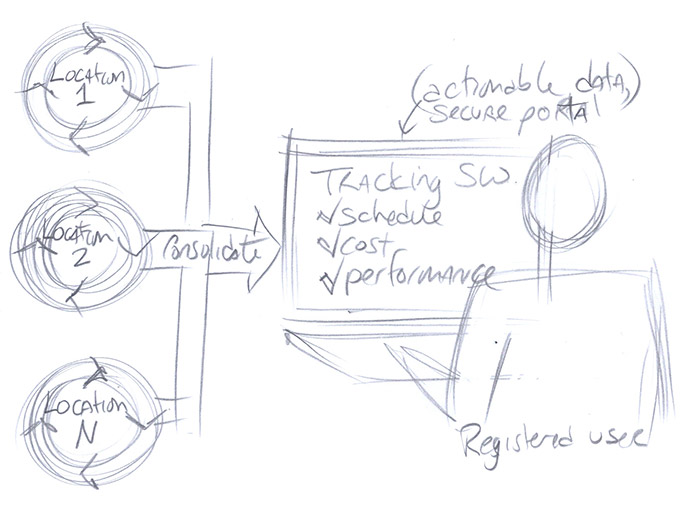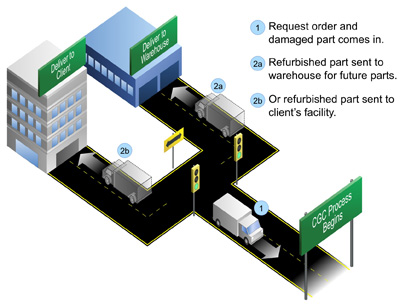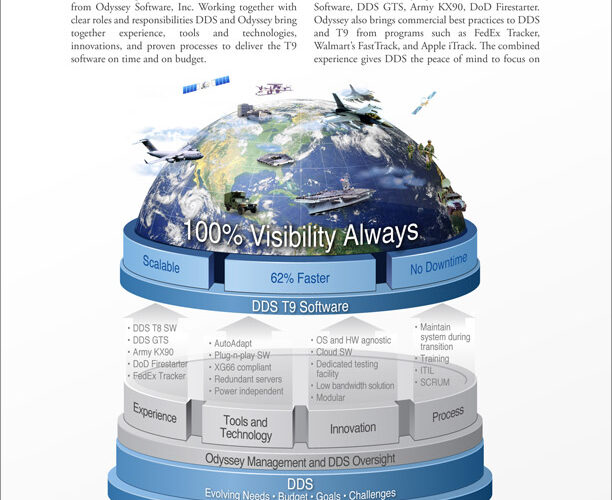The Problem First, I want to define ConOps for those readers unfamiliar with the term:…
Knowing what your customer truly wants is critical to winning a proposal. A deep understanding of your customer’s needs helps you connect your solution with their actual (sometimes unstated) needs. Poorly informed assumptions about your customer’s hopes, fears and biases almost always result in a loss.
The following is the process I use to define customer needs:
- Ask the right questions.
- Research.
- Understand human behavior.

1. Ask the right questions.
Assuming you have a dialogue with your customer, ask open-ended questions. Let them share as much as possible.
Recently, I was teaching a Solutioning class. In an effort to explain the difference between a feature and a benefit, I asked attendees to tell me why they own a drill. Most said, “To make a hole.” Surprisingly, one attendee replied, “To keep my father-in-law from coming over.” When she needed a drill in the past, her father-in-law would arrive, drill in hand, and overstay his welcome. I would have never guessed her specific benefit had I not asked.
The following are effective open-ended questions to discover more about your client’s needs:
- What is going on?
- Can you be more specific? Give me an example.
- How long has this been a problem?
- What has not solving the problem cost you?
- If you could wave a magic wand, what would the solution look like?
- Why haven’t you done this (solved the problem)?
- How do you feel about that?
Dr. Robert Frey, author of Successful Proposal Strategies for Small Businesses, asks future and current customers a specific question, “How would you paint a picture of success on this task/project/program now and going forward?” He listens closely to the customer’s response. His goal (and your goal) is to learn about the customer’s current state, what caused the current challenges, and what is the desired outcome—short and long term. Uncover the customer’s dreams and what concerns keep them up at night.
Because many customers can be guarded with information related to company needs, I ask them to tell a story about their challenges. Through stories, a customer will relive their challenge. Most importantly, they will relive how it felt to encounter and try to overcome it. Emotional responses reveal more about true desires and personal fears so you can uncover how to connect your solution with their objectives by listening to their story.
Images are another way to get to the heart of a challenge. Sketch a solution and you will quickly discover disconnects between your suggestion and what the customer really desires. You do not have to be a great artist like Michelangelo to do this. Draw a rough sketch and walk your customer through your idea. Then ask them, “What am I missing?”

2. Research.
Search online for articles and information your customer has posted. Explore their website, blogs and LinkedIn groups. Find people close to your customer and ask questions. Seek different perspectives. The more you understand their world, the more likely you are to determine their real needs.
My research helps me choose words and images for my proposal that reflects the customer. In turn, they will see themselves in my document and connect the content to their goals and challenges.
3. Understand human behavior.
Behavioral psychology teaches us that decisions are not as logical as we want them to be. In fact, all decisions our customers make must involve their emotions. Our customers’ choices are driven by a combination of extrinsic (conscious) and intrinsic (subconscious) thoughts.
Herbert A. Simon, Nobel Prize winning scholar at the Carnegie Mellon Institute in Pittsburgh, studied corporate decision-making and found that people often ignored formal decision-making models because of time constraints, incomplete information, the inability to calculate consequences, and other variables. Intuitive judgment was the process for most decisions. Neurologist Antonio Damasio reviewed research on patients with damaged ventromedial frontal cortices of the brain, which impaired their ability to feel but left their ability to think analytically intact. Damasio discovered that the patients were unable to make rational decisions even though their ability to reason was fully functional. He concluded that reasoning “depends, to a considerable extent, on a continual ability to experience feelings.”
For example, would you buy a solution from someone you did not trust? Trust is an emotion. The science behind making decisions proves that, although we are not logical, we are mostly predictable in the choices we will make.
Understanding human behavior gives you insight into why your customers choose what they choose. It helps you select which intrinsic elements must be addressed (and how) to improve the likelihood of a win. I recommend reading the following books to learn more about behavioral psychology and how to use it to create effective proposals:
- Predictably Irrational, Dan Ariely
- Nudge, Richard H. Thaler
- The Tipping Point, Malcolm Gladwell
I use graphics to win more proposals. My understanding of human behavior supports the benefits of visual communication. For example, based on mountains of research (and personal experience) the quality of the proposal graphics communicates the quality of the solution and solution provider. Humans cannot isolate emotions from decision-making. Knowing how our customers think improves win rates by connecting stated goals with unstated desires.
Conclusion
By far, the best path to understanding what your customer really wants is by asking the right questions; however, science tells us that our customer may not want to or may not be able to articulate their true wants/needs. For this reason, use research and an understanding of human behavior to fill the gaps and connect the dots for your customer. Do this and you will be more successful.


